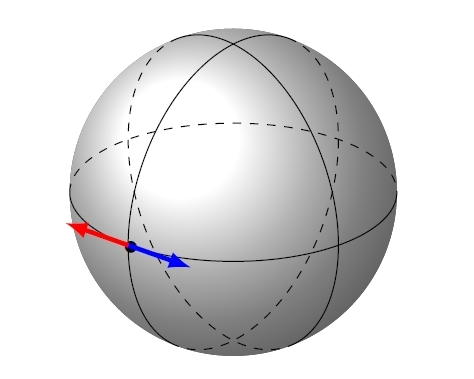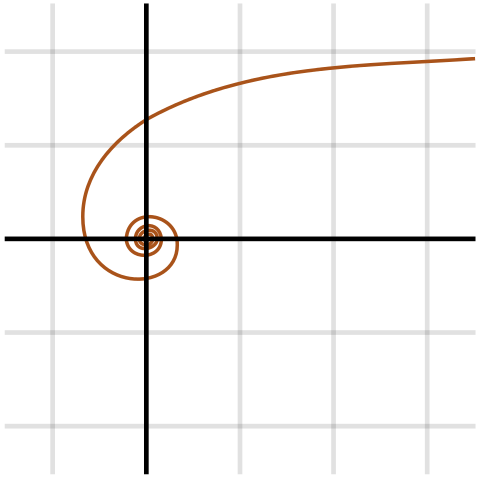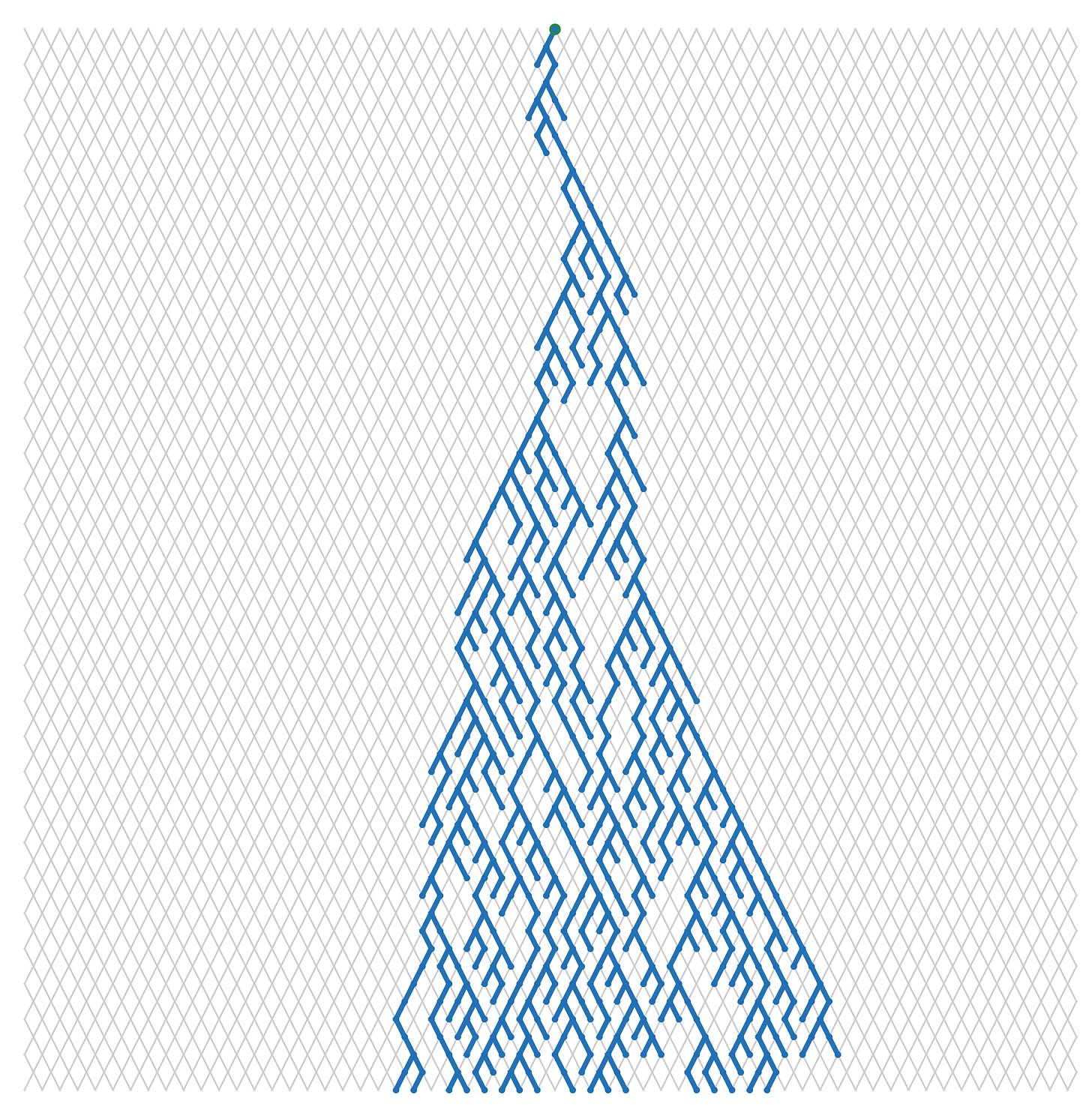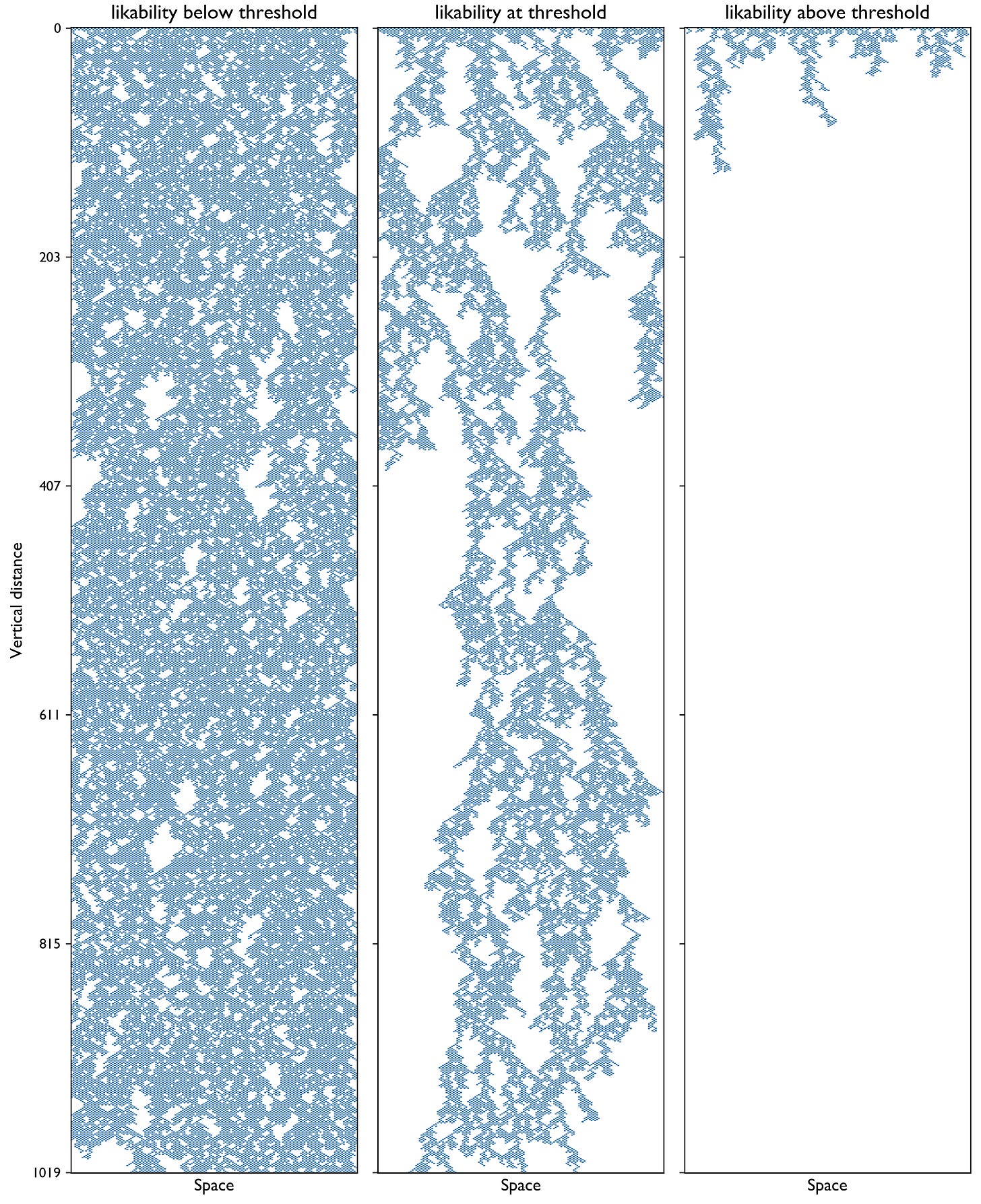Snow is haunting weather forecasts, home owners are taking down Christmas lights, stores are discounting exercise equipment, and faculty-hiring committees are winnowing down applications. In-person interviews often take place between January and March but can extend from December to April. If you applied for faculty positions this past fall and you haven’t begun preparing for interviews, begin. This blog post relates my advice about in-person interviews. It most directly addresses assistant professorships in theoretical physics at R1 North American universities, but the advice generalizes to other contexts.
Top takeaway: Your interviewers aim to confirm that they’ll enjoy having you as a colleague. They’ll want to take pleasure in discussing a colloquium with you over coffee, consult you about your area of expertise, take pride in your research achievements, and understand you even if your specialty differs from theirs. You delight in learning and sharing about physics, right? Focus on that delight, and let it shine.
Anatomy of an interview: The typical interview lasts for one or two days. Expect each day to begin between 8:00 and 10:00 AM and to end between 7:00 and 8:30 PM. Yes, you’re justified in feeling exhausted just thinking about such a day. Everyone realizes that faculty interviews are draining, including the people who’ve packed your schedule. But fear not, even if you’re an introvert horrified at the thought of talking for 12 hours straight! Below, I share tips for maintaining your energy level. Your interview will probably involve many of the following components:
- One-on-one meetings with faculty members: Vide infra for details and advice.
- A meeting with students: Such meetings often happen over lunch or coffee.
- Scientific talk: Vide infra.
- Chalk talk: Vide infra.
- Dinner: Faculty members will typically take you out to dinner. However, as an undergrad, I once joined a student dinner with a faculty candidate. Expect dinner to last a couple of hours, ending between 8:00 and 8:30 PM.
- Breakfast: Interviews rarely extend to breakfast, in my experience. But I once underwent an interview whose itinerary was so packed, a faculty member squeezed himself onto the schedule by coming to my hotel’s restaurant for banana bread and yogurt.
After receiving the interview invitation, politely request that your schedule include breaks. First, of course, you’ll thank the search-committee chair (who probably issued the invitation), convey your enthusiasm, and opine about possible interview dates. After accomplishing those tasks, as a candidate, I asked that a 5-to-10-minute break separate consecutive meetings and that 30–45 minutes of quiet time precede my talk (or talks). Why? For two reasons.
First, the search committee was preparing to pack my interview day (or days) to the gills. I’d have to talk for about twelve hours straight. And—much as I adore the physics community, adore learning about physics from colleagues, and adore sharing physics—I’m an introvert. Such a schedule exhausts me. It would probably exhaust all but the world champions of extroversion, and few physicists could even qualify for that competition. After nearly every meeting, I’d find a bathroom, close my eyes, and breathe. (I might also peek at my notes about my next interviewee; vide infra.) The alone time replenished my energy.
Second, committees often schedule interviews back to back. Consecutive interviews might take place in different buildings, though, and walking between buildings doesn’t take zero minutes. Also, physicists love explaining their research. Interviewer #1 might therefore run ten minutes over their allotted time before realizing they had to shepherd me to another building in zero minutes. My lateness would disrespect Interviewer #2. Furthermore, many interviews last only 30 minutes each. Given minutes, Interviewer #2 and I could scarcely make each other’s acquaintance. So I smuggled travel time into my schedule.
Feel awkward about requesting breaks? Don’t worry; everyone knows that interview days are draining. Explain honestly, simply, and respectfully that you’re excited about meeting everyone and that breaks will keep you energized throughout the long day.
Research your interviewers: A week before your interview, the hiring committee should have begun drafting a schedule for you. The schedule might continue to evolve until—and during—your interview. But request the schedule a week in advance, and research everyone on it.
When preparing for an interview, I’d create a Word/Pages document with one page per person. On Interviewer X’s page, I’d list relevant information culled from their research-group website, university faculty pages, arXiv page, and Google Scholar page. Does X undertake theoretical or experimental research? Which department do they belong to? Which experimental platform/mathematical toolkit do they specialize in? Which of their interests overlap with which of mine? Which papers of theirs intrigue me most? Could any of their insights inform my research or vice versa? Do we share any coauthors who might signal shared research goals? I aimed to be able to guide a conversation that both X and I would enjoy and benefit from.
Ask your advisors if they know anybody on your schedule or in the department you’re visiting. Advisors know and can contextualize many of their peers. For example, perhaps X grew famous for discovery Y, founded subfield Z, or harbors a covert affection for the foundations of quantum physics. An advisor of yours might even have roomed with X in college.
Prepare an elevator pitch for your research program: Cross my heart and hope to die, the following happened to me when I visited another institution (although not to interview). My host and I stepped into elevator occupied by another faculty member. Our conversation could have served as the poster child for the term “elevator pitch”:
Host: Hi, Other Faculty Member; good to see you. By the way, this is Nicole from Maryland. She’s giving the talk today.
Other Faculty Member: Ah, good to meet you, Nicole. What do you work on?
Be able to answer that question—to synopsize your research program—before leaving the elevator. Feel free start with your subfield: artificial active matter, the many-body physics of quantum information, dark-matter detection, etc. But the subfield doesn’t suffice. Oodles of bright-eyed, bushy-tailed young people study the many-body physics of quantum information. How does your research stand out? Do you apply a unique toolkit? Are you pursuing a unique goal? Can you couple together more qubits than any other experimentalist using the same platform? Make Other Faculty Member think, Ah. I’d like to attend that talk.
Dress neatly and academically: Interview clothing should demonstrate respect, while showing that you understand the department’s culture and belong there. Almost no North American physicists wear ties, even to present colloquia, so I advise against ties. Nor do I recommend suits.
To those presenting as male, I’d recommend slacks; a button-down shirt; dark shoes (neither sneakers nor patent leather); and a corduroy or knit pullover, a corduroy or knit vest, or a sports jacket. If you prefer a skirt or dress, I’d recommend that it reach at least your knees. Wear comfortable shoes; you’ll stand and walk a great deal. Besides, many interviews take place during the winter, a season replete with snow and mud. I wore knee-height black leather boots that had short, thick heels.
Look the part. Act the part. Help your interviewers envision you in the position you want.
Pack snacks: A student group might whisk you off to lunch at 11:45, but dinner might not begin until 6:30. Don’t let your blood-sugar level drop too low. On my interview days, I packed apple slices and nuts: a balance of unprocessed sugar, protein, and fat.
One-on-one meetings: The hiring committee will cram these into your schedule like sardines into a tin. Typically, you’ll meet with each faculty member for approximately 30 minutes. The faculty member might work in your area of expertise, might belong to the committee (and so might subscribe to a random area of expertise), or might simply be curious about you. Prepare for these one-on-one meetings in advance, as described above. Review your notes on the morning of your interview. Be able to initiate and sustain a conversation of interest to you and your interlocutor, as well as to follow their lead. Your interlocutor might want to share their research, ask technical questions about your work, or hear a bird’s-eye overview of your research program.
Other topics, such as teaching and faculty housing, might crop up. Feel free to address these subjects if your interlocutor introduces them. If you’re directing the conversation, though, I’d focus mostly on physics. You can ask about housing and other logistics if you receive an offer, and these topics often arise at faculty dinners.
The job talk: The interview will center on a scientific talk. You might present a seminar (perhaps billed as a “special seminar”) or a colloquium. The department will likely invite all its members to attend. Focus mostly on the research you’ve accomplished. Motivate your research program, to excite even attendees from outside your field. (This blog post describes what I look for in a research program when evaluating applications.) But also demonstrate your technical muscle; show how your problems qualify as difficult and how you’ve innovated solutions. Hammer home your research’s depth, but also dedicate a few minutes to its breadth, to demonstrate your research maturity. At the end, offer a glimpse of your research plans. The hiring committee might ask you to dwell more on those in a chalk talk (vide infra).
Practice your talk alone many times, practice in front of an audience, revise the talk, practice it alone again many times, and practice it in front of another audience. And then—you guessed it—practice the talk again. Enlist listeners from multiple subfields of physics, including yours. Also, enlist grad students, postdocs, and faculty members. Different listeners can help ensure that you’re explaining concepts understandably, that you’ve brushed up on the technicalities, and that you’re motivating your research convincingly.
A faculty member once offered the following advice about questions asked during job talks: if you don’t know an answer, you can offer to look it up after the talk. But you can play this “get out of jail free” card only once. I’ll expand on the advice: if you promise to look up an answer, then follow through, and email the answer to the inquirer. Also, even if you don’t know an answer, you can answer a related question that’ll satisfy the inquirer partially. For example, suppose someone asks whether a particular experiment supports a prediction you’ve made. Maybe you haven’t checked—but maybe you have checked numerical simulations of similar experiments.
The chalk talk: The hiring committee might or might not request a chalk talk. I have the impression that experimentalists receive the request more than theorists do. Still, I presented a couple of chalk talks as a theorist. Only the hiring committee, or at least only faculty members, will attend such a talk. They’ll probably have attended your scientific talk, so don’t repeat much of it.
The name “chalk talk” can deceive us in two ways. First, one committee requested that I prepare slides for my chalk talk. Another committee did limit me to chalk, though. Second, the chalk “talk” may end up a conversation, rather than a presentation.
The hiring-committee chair should stipulate in advance what they want from your chalk talk. If they don’t, ask for clarification. Common elements include the following:
- Describe the research program you’ll pursue over the next five years.
- Where will you apply for funding? Offer greater detail than “the NSF”: under which NSF programs does your research fall? Which types of NSF grants will you apply for at which times?
- How will you grow your group? How many undergrads, master’s students, PhD students, and postdocs will you hire during each of the next five years? When will your group reach a steady state? How will the steady state look?
- Describe the research project you’ll give your first PhD/master’s/undergraduate student.
- What do you need in a startup package? (A startup package consists of university-sourced funding. It enables you to hire personnel, buy equipment, and pay other expenses before landing your first grants.)
- Which experimental/computational equipment will you purchase first? How much will it cost?
- Which courses do you want to teach? Identify undergraduate courses, core graduate-level courses, and one or two specialized seminars.
Sample interview questions: Sketch your answers to the following questions in bullet points. Writing the answers out will ensure that you think through them and will help you remember them. Using bullet points will help you pinpoint takeaways.
- The questions under “The chalk talk”
- What sort of research do you do?
- What are you most excited about?
- Where do you think your field is headed? How will it look in five, ten, or twenty years?
- Which paper are you proudest of?
- How will you distinguish your research program from your prior supervisors’ programs?
- Do you envision opportunities for theory–experiment collaborations?
- What teaching experience do you have? (Research mentorship counts as teaching. Some public outreach can count, too.)
- Which mathematical tools do you use most?
- How do you see yourself fitting into the department? (Does the department host an institute for your subfield? Does the institute have oodles of theorists whom you’ll counterbalance as an experimentalist? Will you bridge multiple research groups through your interdisciplinary work? Will you anchor a new research group that the department plans to build over the next decade?)
Own your achievements, but don’t boast: At a workshop late in my PhD, I heard a professor describe her career. She didn’t color her accomplishments artificially; she didn’t sound arrogant; she didn’t even sound as though she aimed to impress her audience. She sounded as though the workshop organizer had tasked her with describing her work and she was following his instructions straightforwardly, honestly, and simply. Her achievements spoke for themselves. They might as well have been reciting Shakespeare, they so impressed me. Perhaps we early-career researchers need another few decades before we can hope to emulate that professor’s poise and grace. But when compelled to describe what I’ve done, I lift my gaze mentally to her.
My schooling imprinted on me an appreciation for modesty. Therefore, the need to own my work publicly used to trouble me. But your interviewers need to know of your achievements: they need to respect you, to see that you deserve a position in their department. Don’t downplay your contributions to collaborations, and don’t shy away from claiming your proofs. But don’t brag or downplay your collaborators’ contributions. Describe your work straightforwardly; let it speak for itself.
Evaluators shouldn’t ask about your family: Their decision mustn’t depend on whether you’re a single adult who can move at the drop of a hat, whether you’re engaged to someone who’ll have to approve the move, or whether you have three children rooted in their school district. This webpage elaborates on the US’s anti-discrimination policy. What if an evaluator asks a forbidden question? One faculty member has recommend the response, “Does the position depend on that information?”
Follow up: Thank each of your interviewers individually, via email, within 24 hours of the conversation. Time is to faculty members as water is to Californians during wildfire season. As an interviewee, I felt grateful to all the faculty who dedicated time to me. (I mailed hand-written thank-you cards in addition to writing emails, but I’d expect almost nobody else to do that.)
How did I compose thank-you messages? I’d learned some nugget from every meeting, and I’d enjoyed some element of almost every meeting. I described what I learned and enjoyed, and I expressed the gratitude I felt.
Try to enjoy yourself: A committee chose your application from amongst hundreds. Cherish the compliment. Cherish the opportunity to talk physics with smart people. During my interviews, I learned about quantum information, thermodynamics, cosmology, biophysics, and dark-matter detection. I connected with faculty members whom I still enjoy greeting at conferences; unknowingly recruited a PhD student into quantum thermodynamics during a job talk; and, for the first time, encountered a dessert shaped like sushi (at a faculty dinner. I stuck with a spicy tuna roll, but the dessert roll looked stunning). Retain an attitude of gratitude, and you won’t regret your visit.










































































 ︎
︎
















